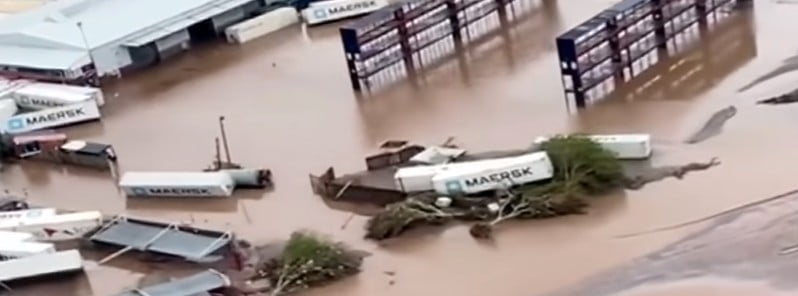Study reveals Durban 2022 floods as KZN’s most catastrophic natural disaster on record, South Africa

A recent study has found that the devastating floods in Durban in April 2022 were the most catastrophic natural disaster ever recorded in KwaZulu-Natal (KZN) in terms of lives lost, economic impact, and damaged or destroyed infrastructure.
A new study by researchers from the University of the Witwatersrand in Johannesburg, South Africa, and the University of Brighton, UK, has determined that the disastrous floods that hit Durban in April 2022 were the most catastrophic natural disaster in KZN’s history in terms of lives lost, infrastructure damage, and economic impact. The research, published in the South African Geographical Journal, reconstructed the history of floods in KZN since the 1840s and confirmed that flooding events have doubled over the last century or more.
Professors Stefan Grab from Wits University and David Nash constructed a geographical history of flooding disasters in KZN by examining thousands of archived articles, colonial and government records, early missionary records, and meteorological records dating back to the 1850s. They defined extreme flooding events as major rivers overflowing their banks, accompanied by one or more significant consequences, such as loss of human life, livestock, agricultural fields and crops, and infrastructure damage.
The April 2022 floods resulted in 459 deaths, 88 people missing, over 4 000 homes destroyed, 40 000 people left homeless, and 45 000 people temporarily unemployed. The cost of infrastructure and business losses was estimated at US$2 billion. The KZN coastal zone, including the greater Durban area and South Coast, received more than 300 mm (11.8 inches) of rain in 24 hours.
The researchers discovered that while the April 2022 floods were the most catastrophic in terms of lives lost, infrastructure damage, and economic loss, they were not the biggest in terms of area affected, homes destroyed, or amount of rainfall that fell collectively over a few days. In comparison, a flood in September 1987 affected a larger geographic area of KZN and destroyed more homes, while a flooding event in April 1856 in Durban produced a greater quantity of rainfall over a three-day period.
Professor Grab emphasized the need for better preparation and improved infrastructure, especially drainage systems, in all South African cities and towns to handle heavy rainfall and flood events in the future.
References:
1 The 2022 Durban floods were the most catastrophic yet recorded in KwaZulu-Natal, says study – Wits University – April 11, 2023
2 A new flood chronology for KwaZulu-Natal (1836–2022): the April 2022 Durban floods in historical context – S.W. Grab and David J. Nash – South African Geographical Journal – April 10, 2023 – DOI: https://doi.org/10.1080/03736245.2023.2193758
Featured image credit: SABC News (stillshot)

Commenting rules and guidelines
We value the thoughts and opinions of our readers and welcome healthy discussions on our website. In order to maintain a respectful and positive community, we ask that all commenters follow these rules.